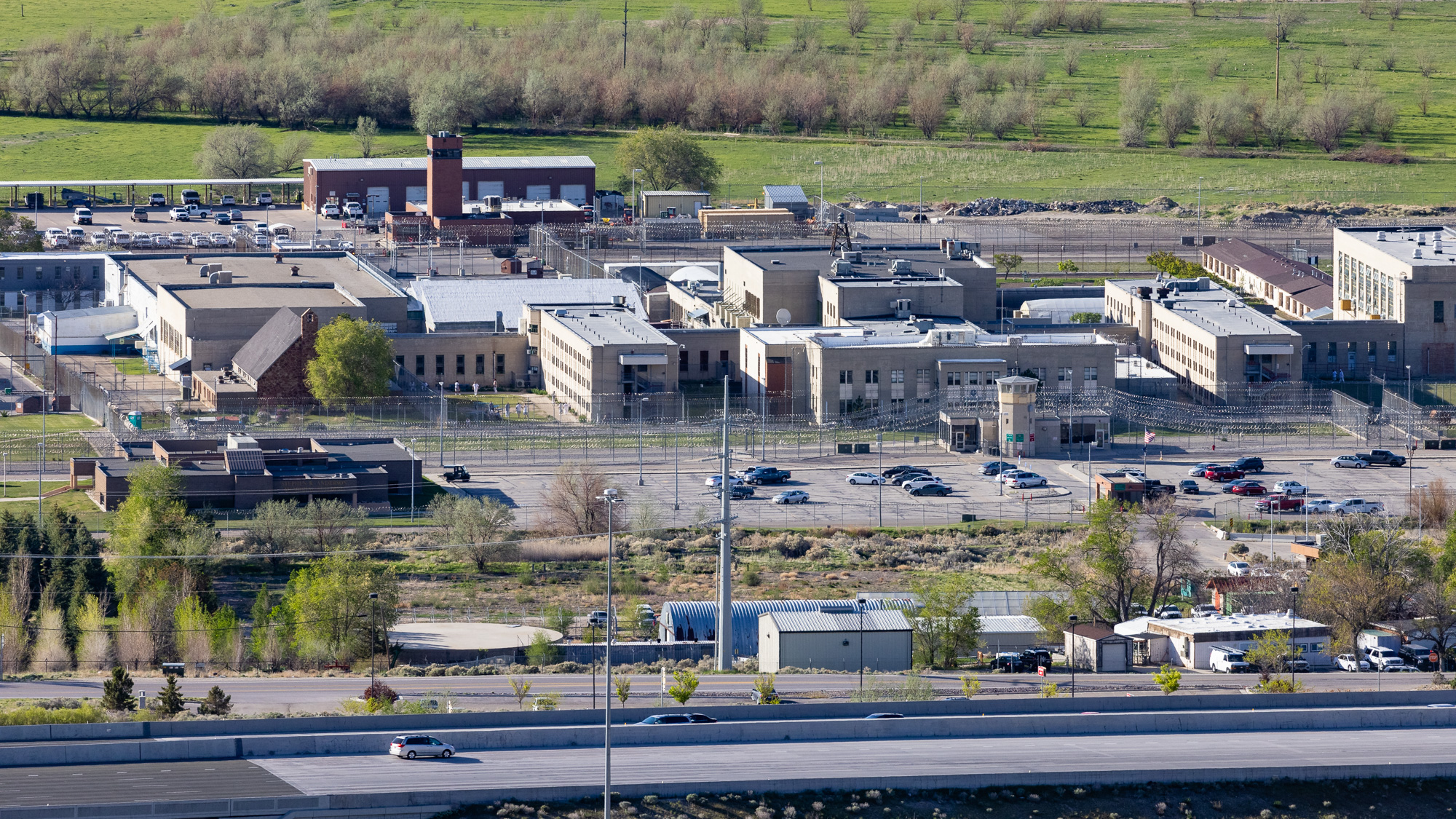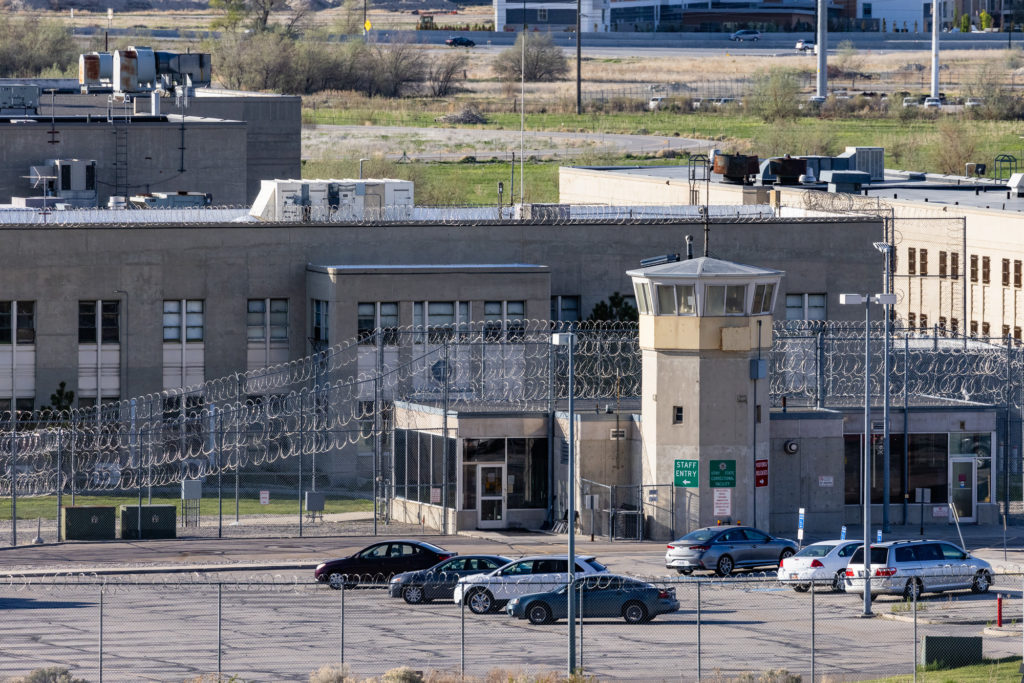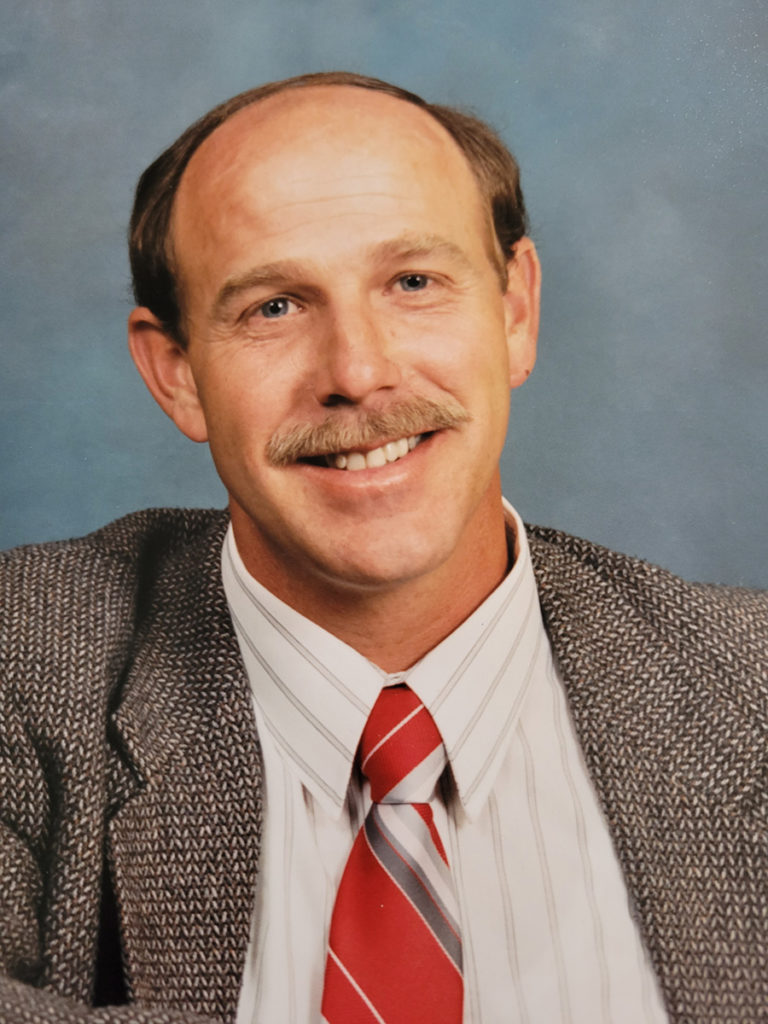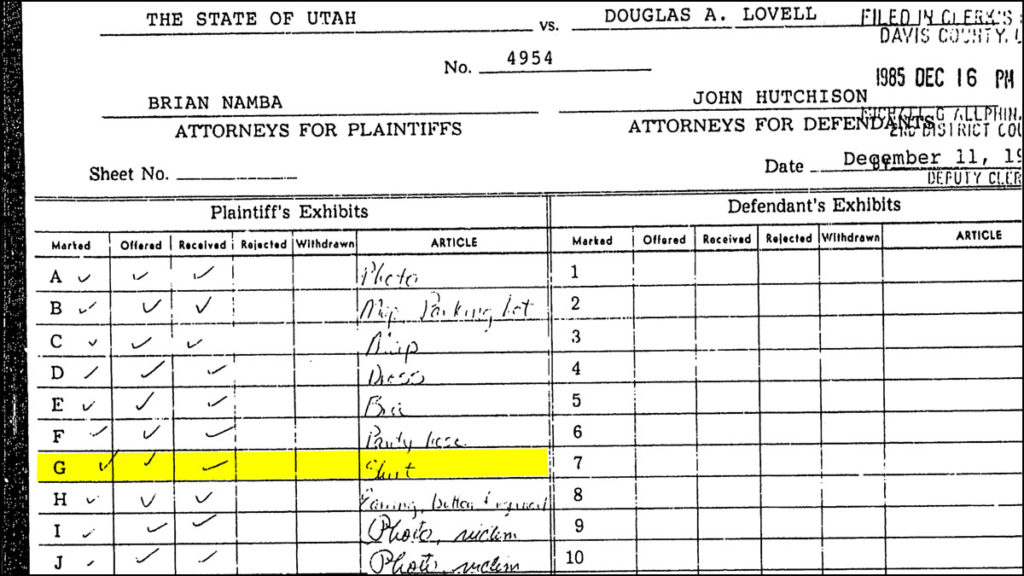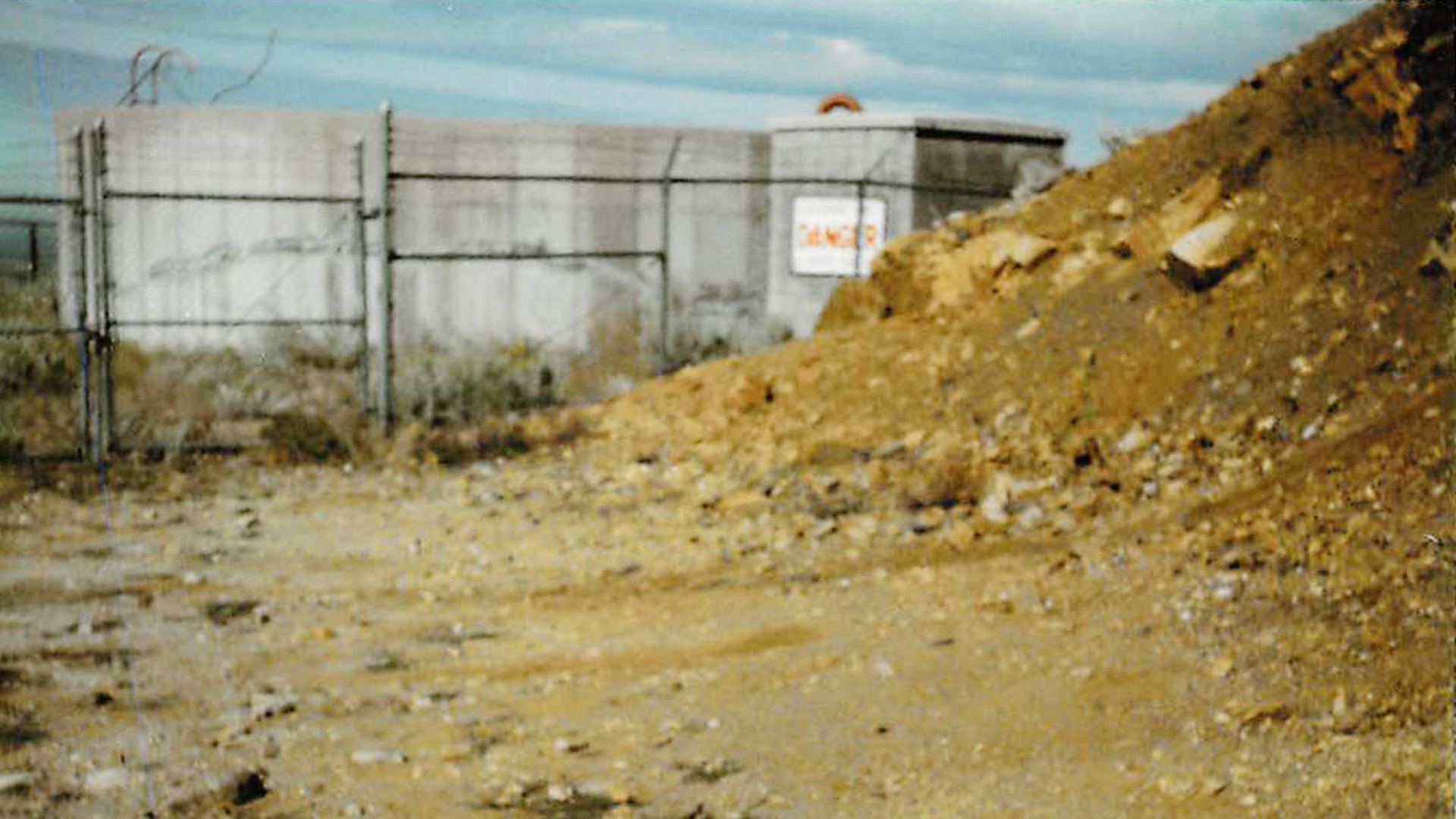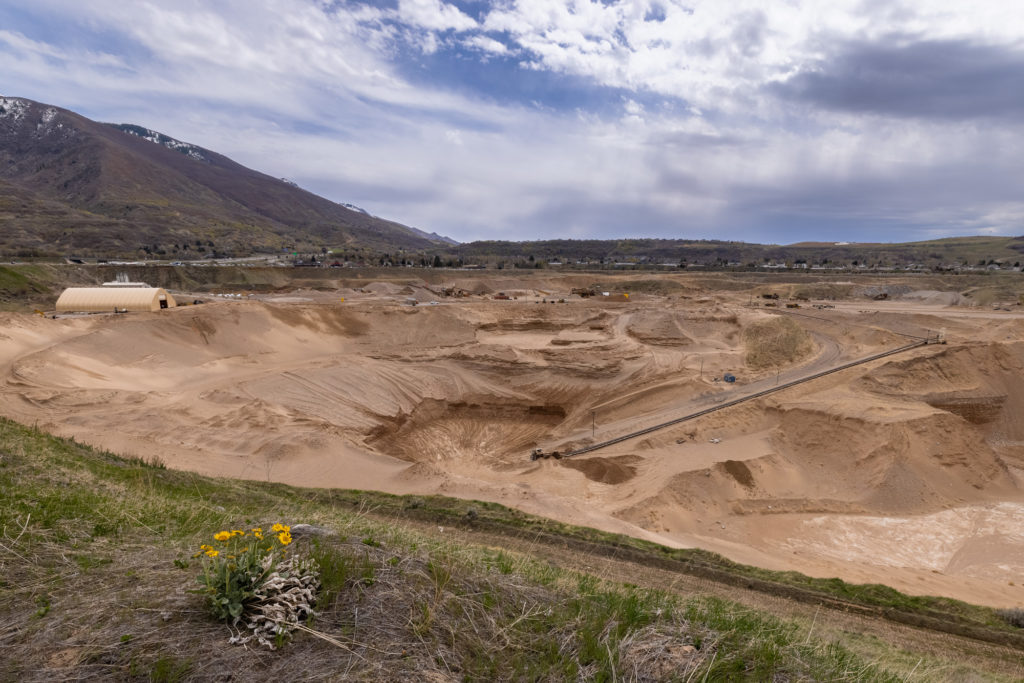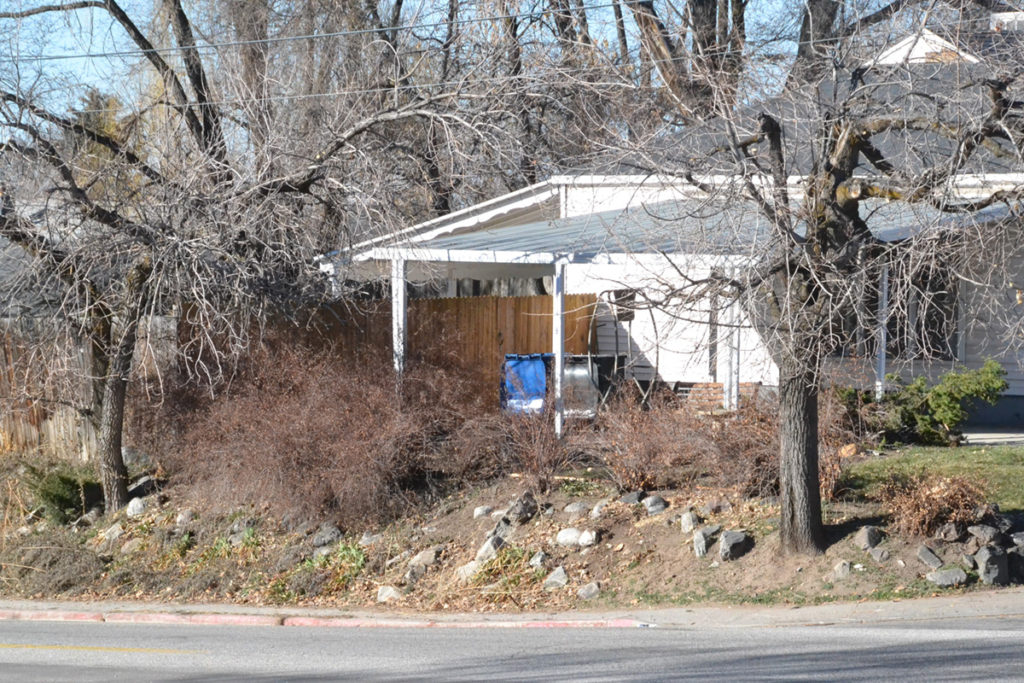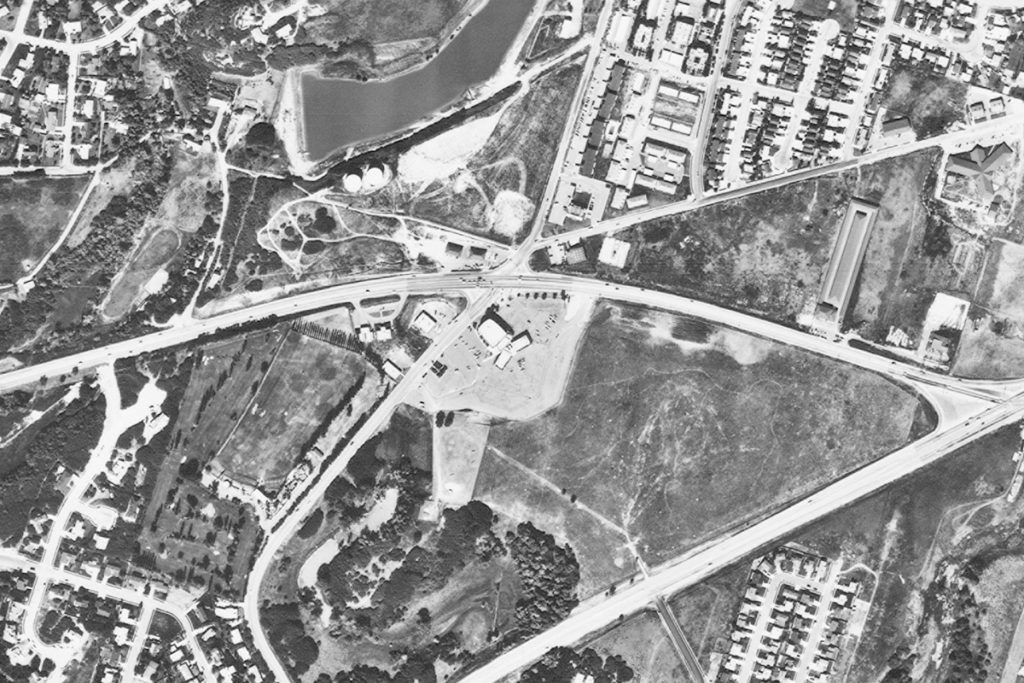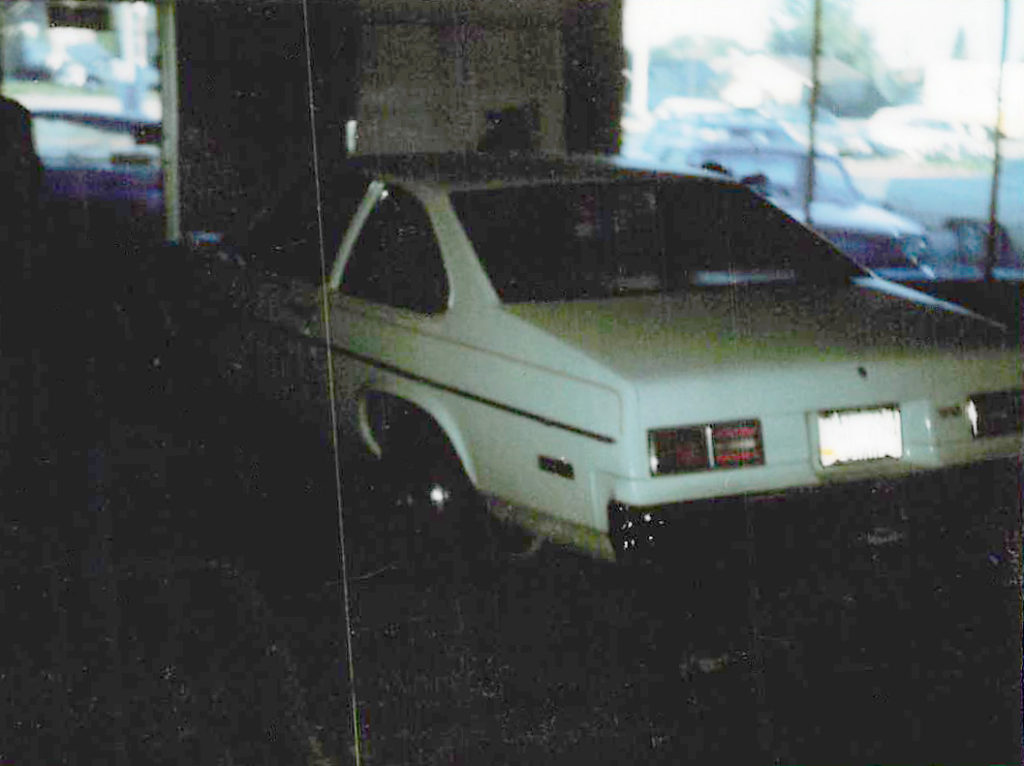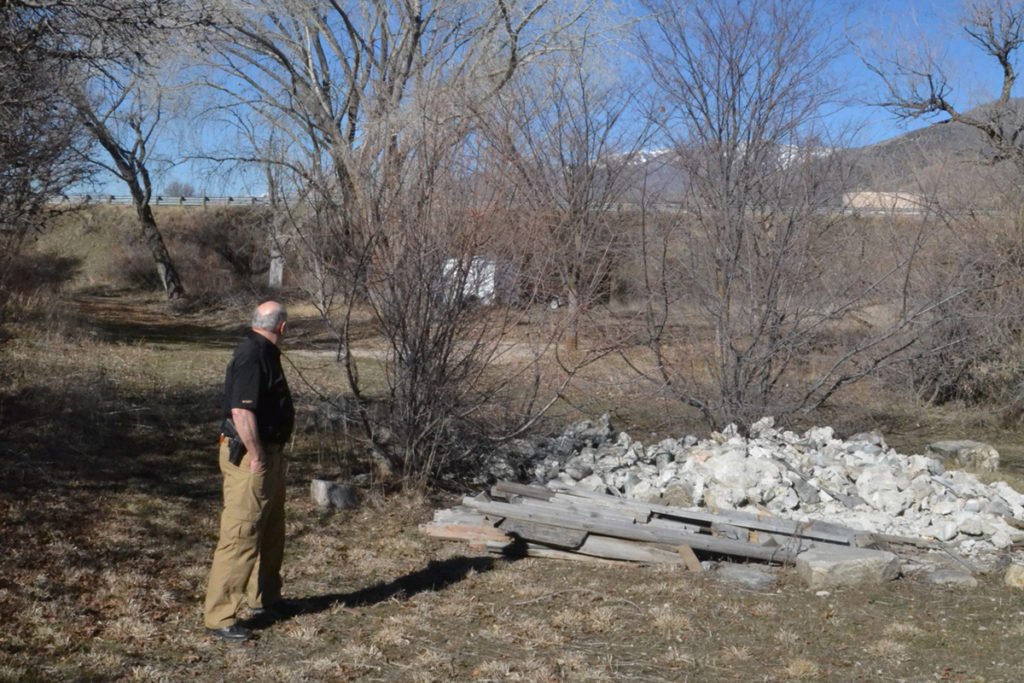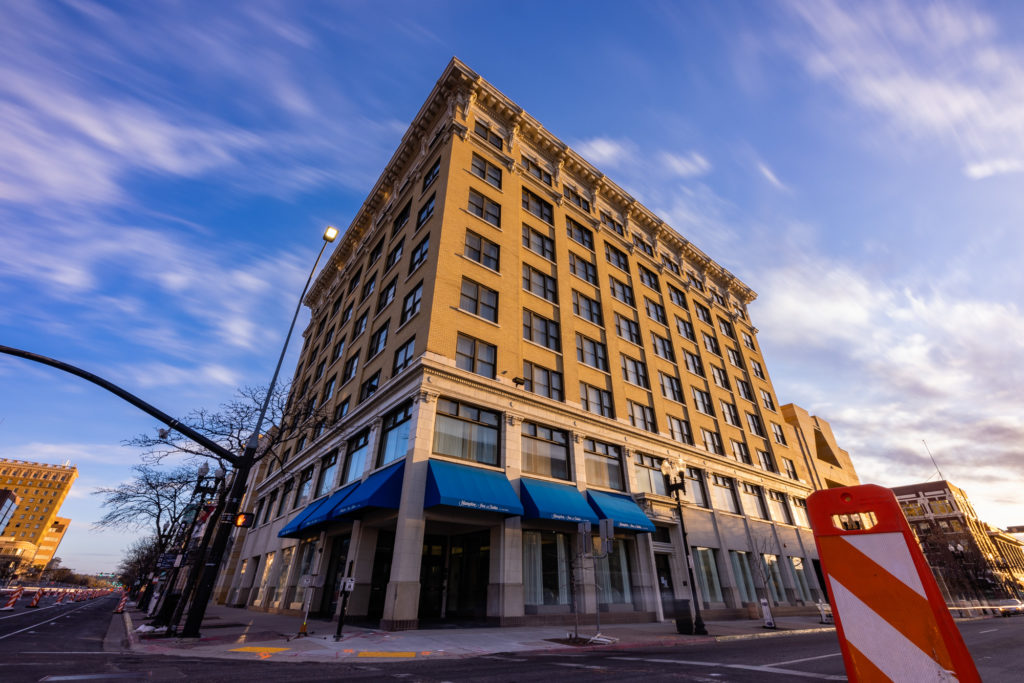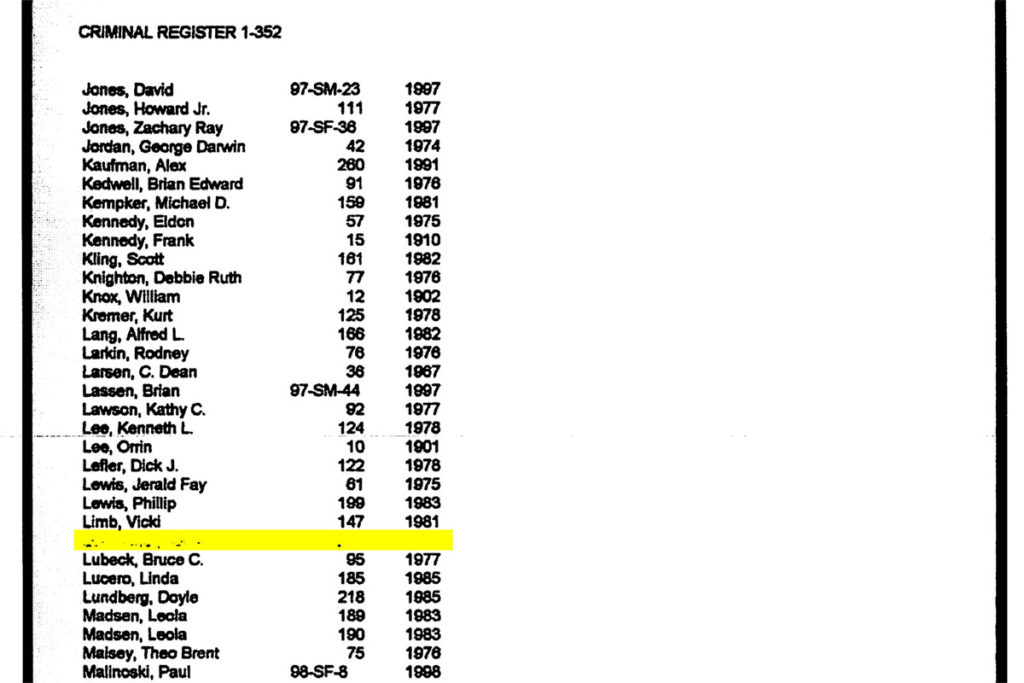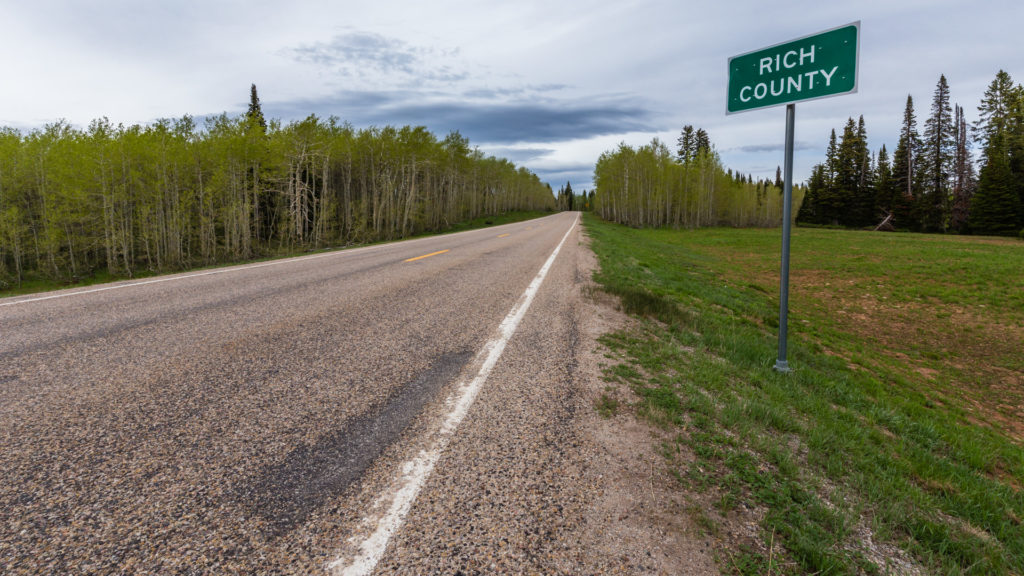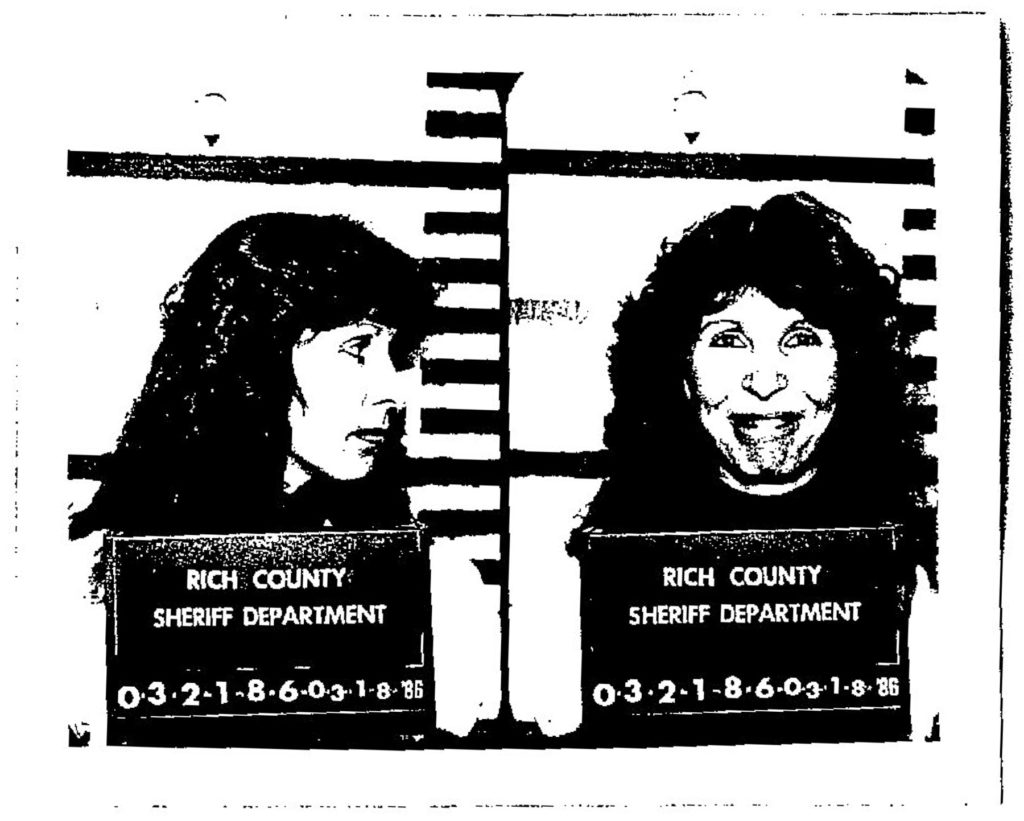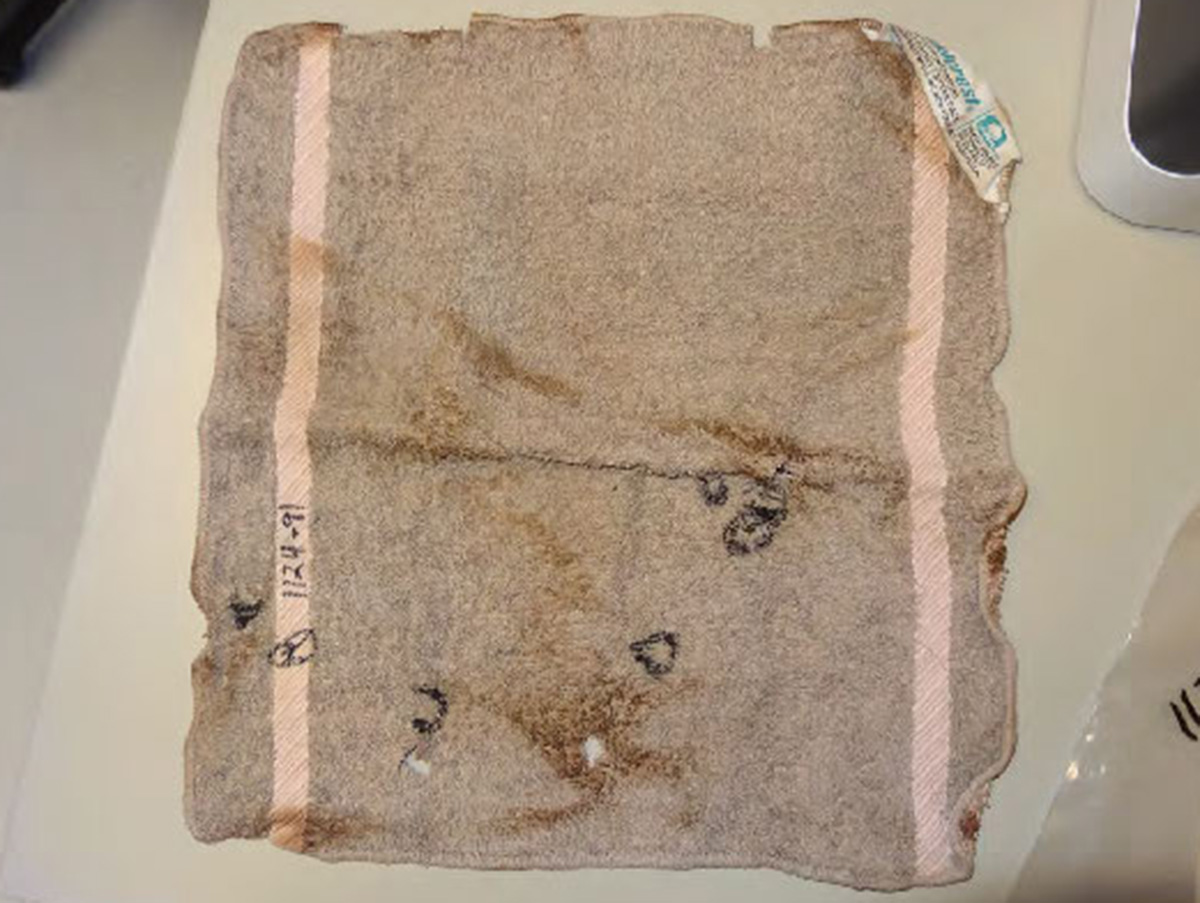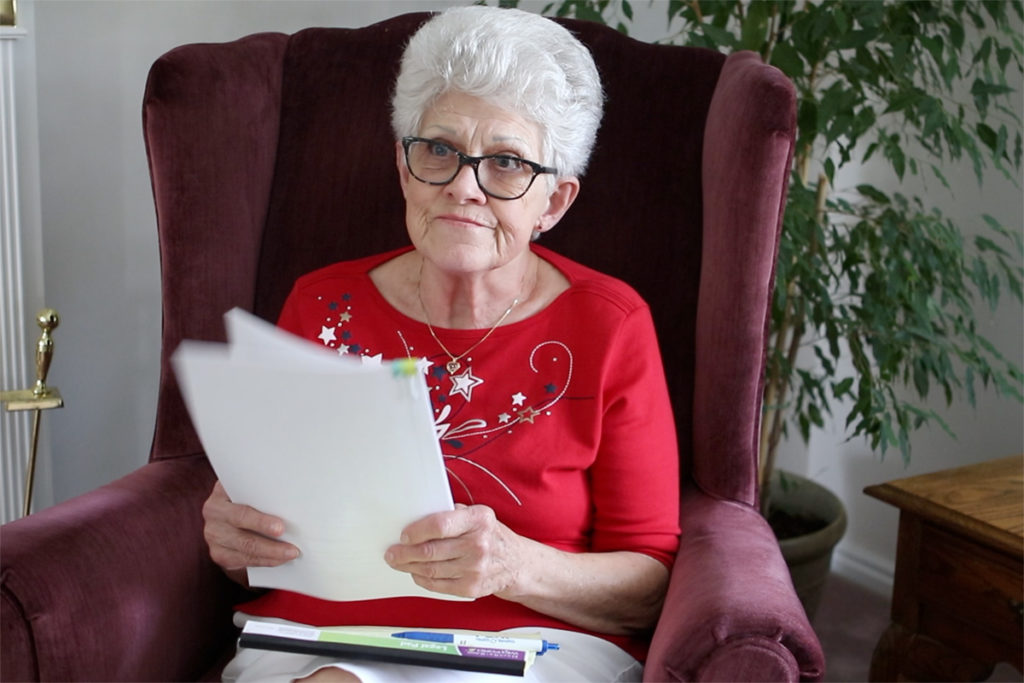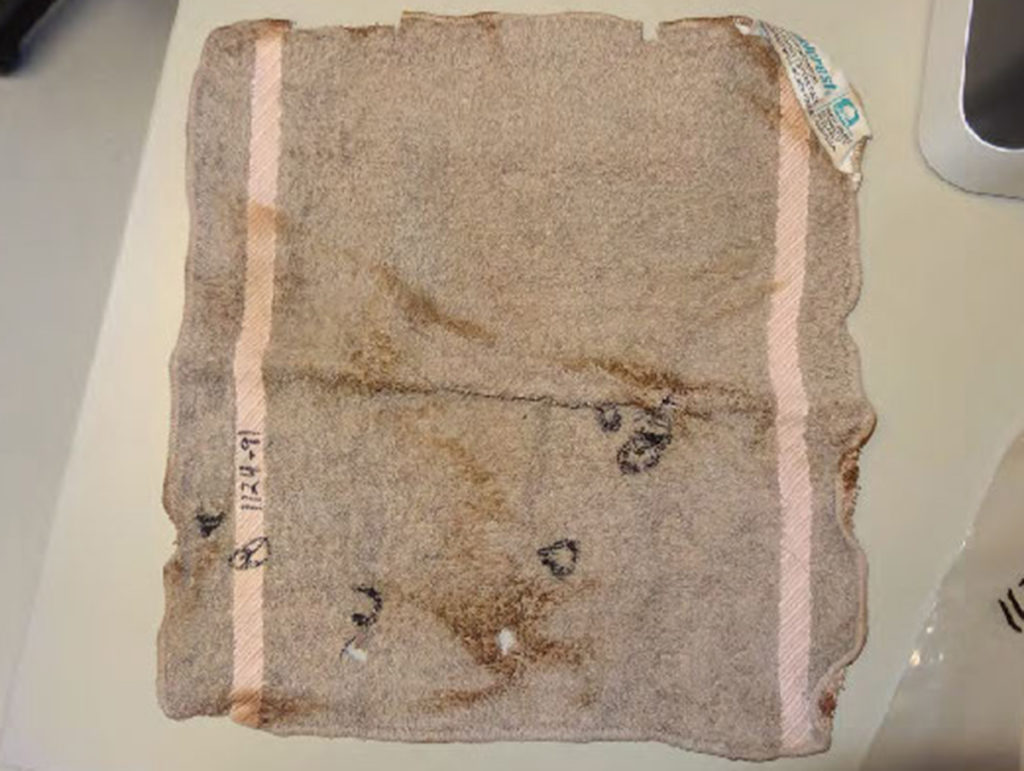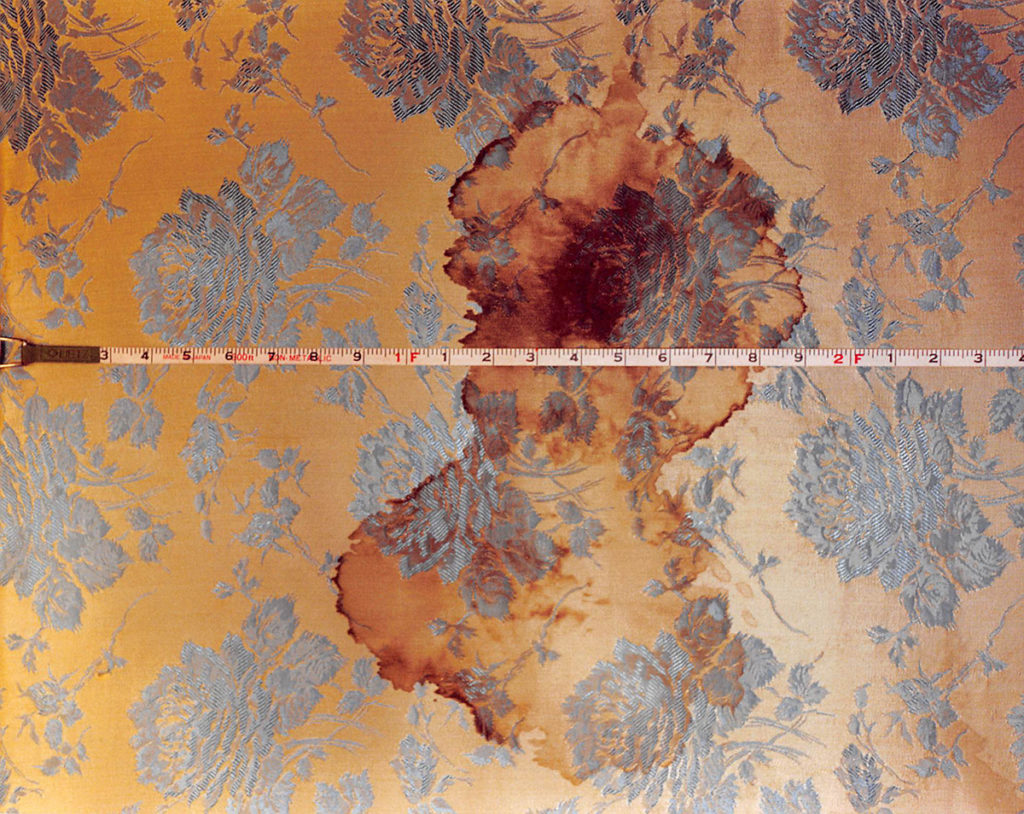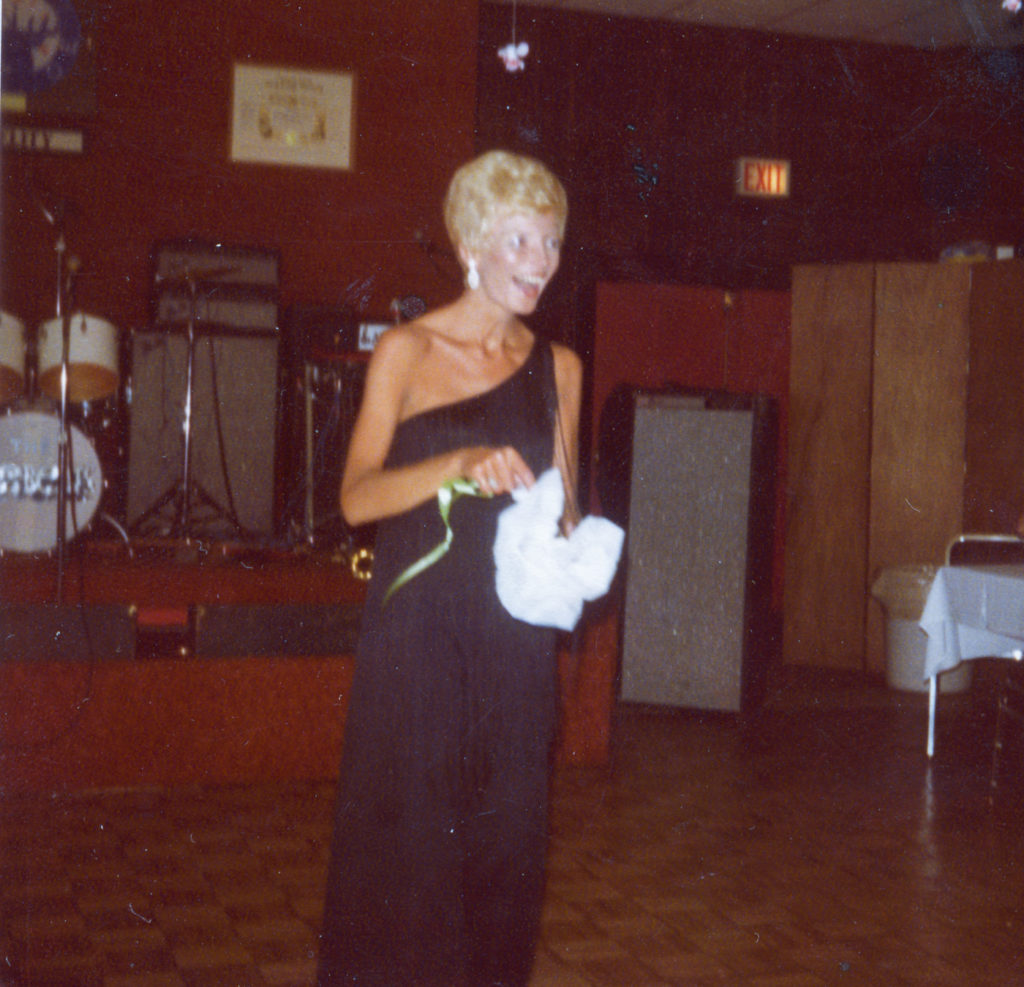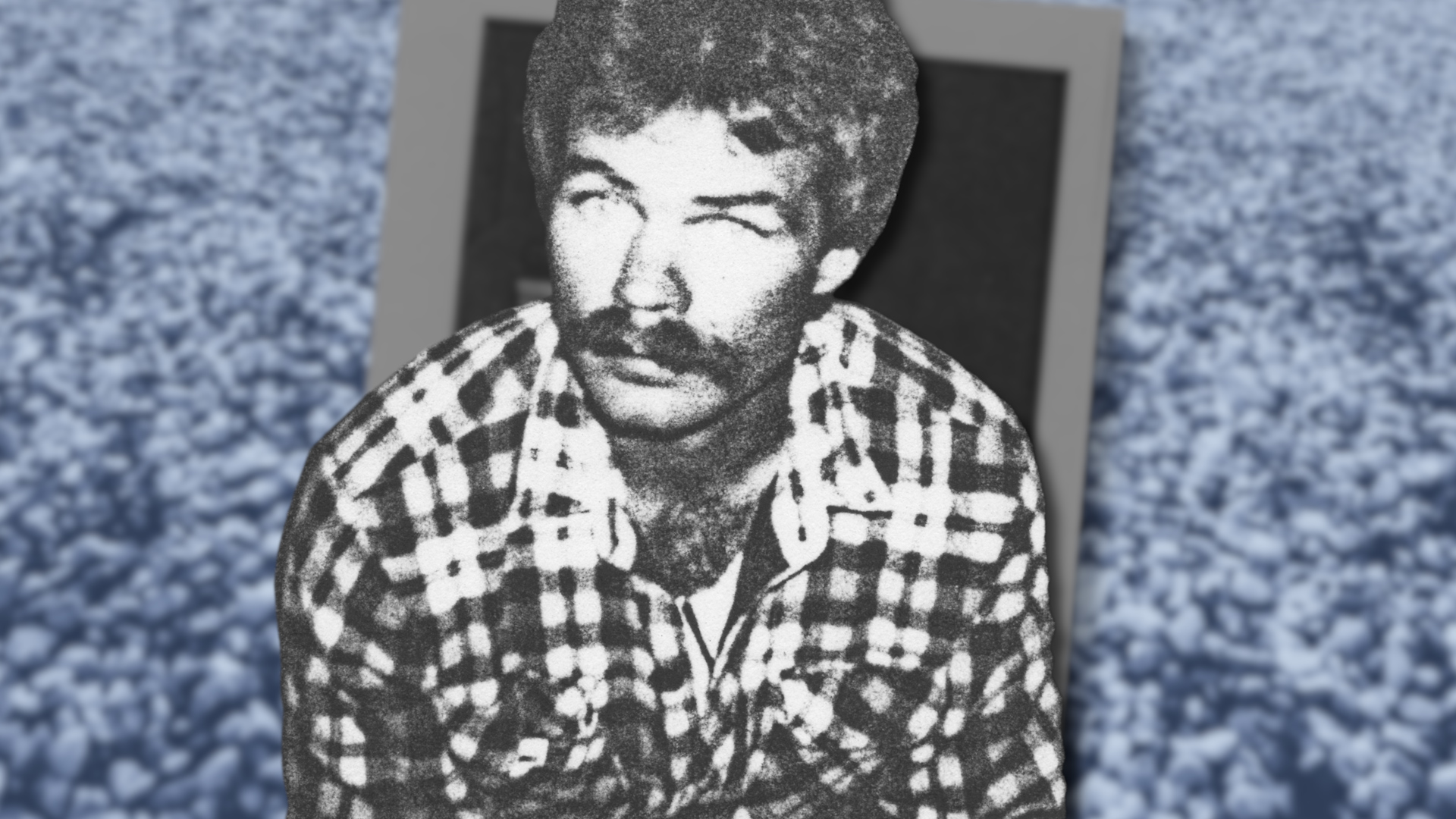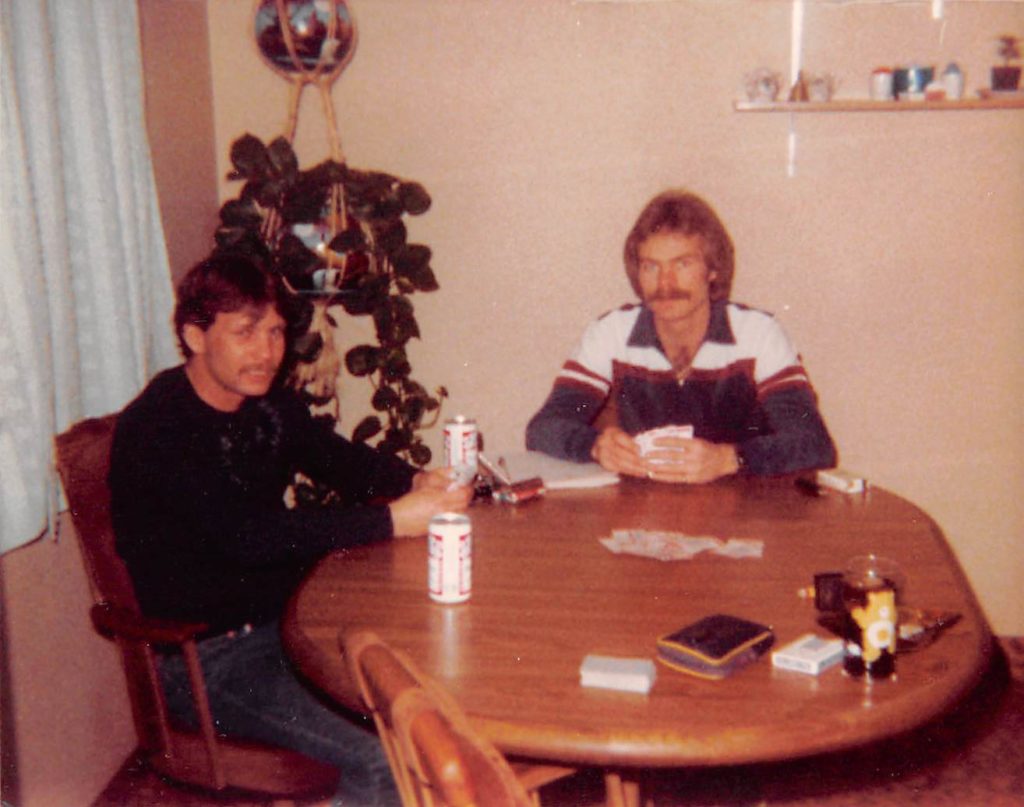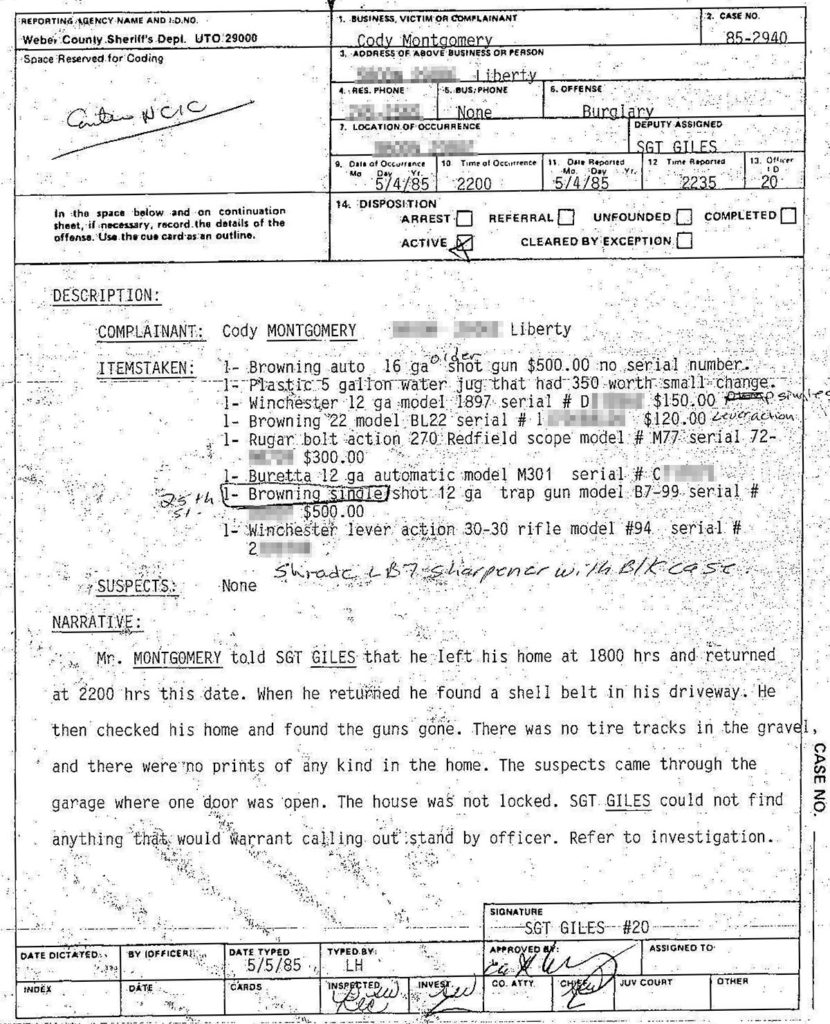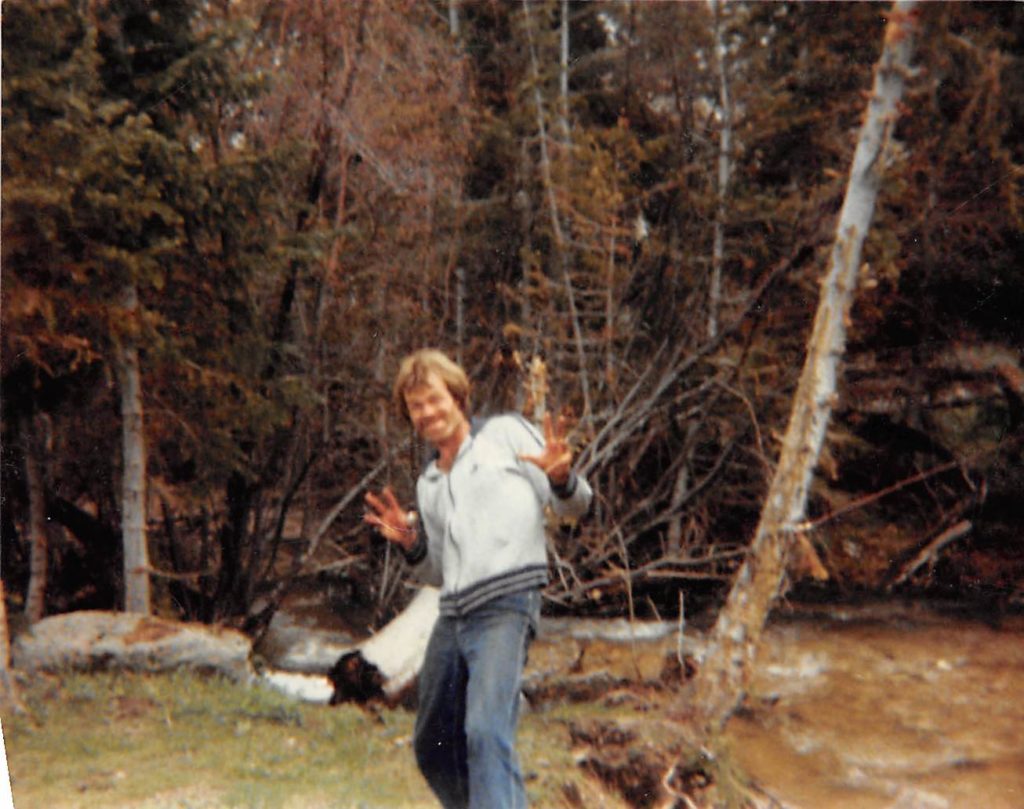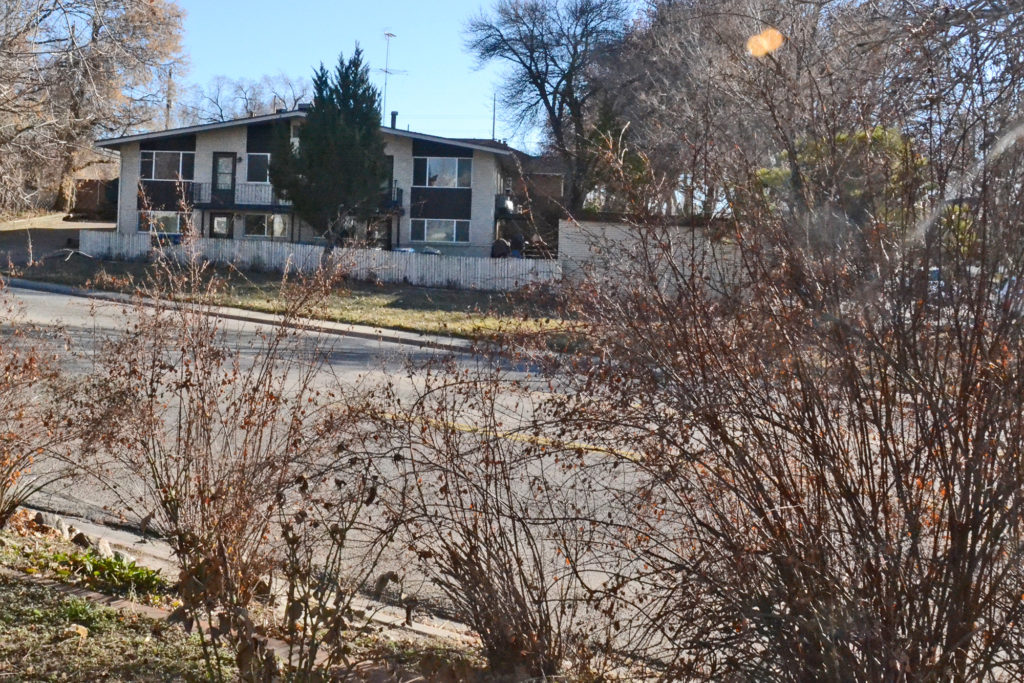Dave Cawley: Greg Roberts saw his mother everywhere. He’d spot cars on the highway that looked like Joyce’s Oldsmobile…
Greg Roberts: Big white Delta 88. Huge car.
Dave Cawley: …and catch himself doing double-takes at stoplights, hoping to see her behind the wheel. The conversations he’d had with his mom, after her rape, replayed over and over in his mind. He agonized about what she hadn’t told him.
Greg Roberts: I talked to her real regularly but in the meantime, y’know, I was at school and she didn’t want to effect my schooling and grades and things that were going on so…
Dave Cawley: A single thought haunted Greg: he had not been there to protect her. He didn’t share this pain with anyone, save perhaps his sister and father.
Mel Roberts: He holds a lot of it inside of him.
Dave Cawley: Mel Roberts told me Greg bore this burden, the sense of guilt, in private.
Mel Roberts: The only time we’ll ever talk about it is if we’re just together alone. We don’t talk about it much when other people are around.
Dave Cawley: Greg had finished dental school and, at the end of 1990, wrapped up his residency with the Georgetown University Medical Service in Washington, D.C. He’d achieved his childhood dream and become not just a dentist, but an oral surgeon. The person who would’ve been most proud of him, who would have celebrated his achievement more than anyone, was not there. Nearly six years had passed since Greg had first faced the question of whether or not to drop out of school and move home to help search for Joyce. Mel had urged him to hold fast.
Mel Roberts: I still think it was the right decision. … There wasn’t a thing he could do by being there.
Dave Cawley: Now, at the start of 1991, Greg confronted a new choice: where to go next. Mel had settled down in Texas and he seemed likely to stay there. Kim and aunt Dorothy were both in Utah. And Joyce was, well, Greg didn’t know. Much of what he then knew about his mother’s disappearance had come to him secondhand. This was, after all, the age before Google. If you even had internet access at home, you paid for it by the minute and it tied up your phone line.
For years, Kim had cut articles about her mom out of the local newspapers and mailed them across the country to Greg. She’d promised to keep him informed of every development. This tether kept tugging Greg back toward South Ogden, toward where he’d last seen his mom in the summer in 1984, waving goodbye as he’d pulled away from her in his overloaded Honda Accord.
The time had come for Greg to return home.
This is Cold, season 2, episode 7: Shameless. From KSL Podcasts, I’m Dave Cawley. Back after this quick break.
[Ad break]
Dave Cawley: Colleen Bartell struggled to get through to Doug Lovell. She’d been working as a licensed clinical social worker at the Utah State Prison since 1979, the same year Doug had arrived there on an armed robbery conviction. But they hadn’t met until 1989, when Colleen was assigned to manage the Merit Two program at the prison’s special service dormitory, or SSD. That’s where Doug was living.
Many of the inmates enrolled in the Merit Two program were there to work through mild cognitive or behavioral issues and they demanded much of Colleen’s time. As a result, she didn’t interact with Doug much at first. She hadn’t been the one to admit Doug to program, either, but knew from his file the ostensible purpose for his presence was treatment for depression. She noted he seemed guarded. That began to change about six months into Colleen’s assignment at SSD, round about the time Doug’s wife Rhonda filed for divorce. Little by little, he started to talk. Colleen figured it had just taken time for Doug to suss out if he could trust her.
Doug told Colleen he’d been wrongly accused and convicted. He said hadn’t raped Joyce Yost. Colleen focused her efforts on helping Doug address this denial. She wanted him to understand his minimizations of his own actions were impediments to his progress in therapy.
She continued to observe Doug as the weeks and months went on. She noted he was high-functioning and stable, something she couldn’t say for all of the inmates at SSD. He was not violent. In fact, he often mediated disputes between prison staff and other inmates.
Perhaps the best example of this came in August of ’91, when Jeff Pratt — the lead corrections officer at SSD — had a dangerous accident. Jeff placed a letter about it in Doug’s jacket, or file. Here’s what it said.
Andy Farnsworth (as Jeff Pratt): Letter of appreciation for Doug Lovell, inmate number 14679. On August 11, 1991, at approximately 1712 hours in the supply room at SSD, a defective can of insecticide sprayed on me in the face and eyes, causing a burning sensation. At that point I was blinded and not sure of the direction out. Lovell grabbed my arm and led me to the bathroom speaking precise directions in a calm voice to get me there quickly. Once in the bathroom, Lovell got the water going and helped me flush my face and eyes … credit Lovell for preventing any serious harm or injury to me.
Dave Cawley: Colleen transferred out of SSD about that same time. She took over another program, doing group-oriented substance abuse counseling. Doug applied to join. This was interesting, considering Doug claimed not to be using at that time. In fact, he said he’d been off pills since first arriving at the prison in 1986. But now he wanted Colleen’s help in figuring out why he’d become addicted in the first place. It was either progress, or a ruse.
Colleen denied Doug’s application for group drug abuse counseling. Not because she didn’t think he was being honest, but because she didn’t have room. Yet.
[Scene transition]
Dave Cawley: South Ogden police sergeant Terry Carpenter had spent the summer of ’91 working to verify information he’d received from Doug Lovell’s ex-wife, Rhonda. He also spent a lot of time transcribing — by hand — the audio recording from the wire Rhonda had worn into the Utah State Prison.
Dave Cawley: And I know the quality of the tape that first time around—
Terry Carpenter: Is horrible.
Dave Cawley: —pretty rough.
Terry Carpenter: But I laid on the floor of my living room with my stereo and would push backward and forward and play ‘em and my poor little wife would help me try to understand what they were saying.
Dave Cawley: A copy of that tape would later go through enhancement at FBI headquarters, but it didn’t help much. Still, Terry was able to make out enough. He’d heard Doug mentioned Tom Peters and Billy Jack, the two men Doug’d hired to kill Joyce. Terry had already talked to Tom once at the Utah State Prison, but dropped by to see him again on September 5, 1991.
Terry Carpenter: ‘Kay, we’re recording this now so…
Dave Cawley: And this time, he put their conversation on tape.
Terry Carpenter (from September, 1991 police recording): How you doing?
Tom Peters (from September, 1991 police recording): Oh pretty good. How about you?
Terry Carpenter (from September, 1991 police recording): I’m doing, alright.
Tom Peters (from September, 1991 police recording): (Laughs) You’re doing alright.
Dave Cawley: Listen close, because this audio comes from an old cassette tape and Tom’s voice isn’t always clear.
Terry Carpenter (from September, 1991 police recording): You getting any flak over our last visit?
Tom Peters (from September, 1991 police recording): Uh, a little. There is some concern.
Terry Carpenter (from September, 1991 police recording): Is that right? Did he talk to you about it?
Tom Peters (from September, 1991 police recording): Yeah. Well, I talked to him, actually.
Dave Cawley: Tom told Terry that on the day of his last visit to the prison, Doug had confronted Tom and asked what he’d told the detective.
Tom Peters (from September, 1991 police recording): At first he said, yeah, he said, ‘Man, I don’t know how you can do this to me,’ you know? I said, ‘I didn’t do nothing to you,’ you know? I says, ‘Really Doug, I ain’t done nothing.’ He said, ‘But you did.’
Dave Cawley: Tom had insisted he hadn’t said anything. Doug hadn’t been convinced, because Terry Carpenter had known about his having paid people to have Joyce killed. In this next clip, Tom tells Terry that Doug’d told him “When he started telling me these things, I knew it had to be you.”
Tom Peters (from September, 1991 police recording): What he said, he said, ‘Man,’ he said, ‘When he started telling me these things I knew it had to be you ‘cause you was the only one that knew.’ And he said, ‘But then he told me about some guns.’
Dave Cawley: Terry had told Doug he knew about the stolen guns. Doug had never told Tom about the guns, which he’d swiped with someone else.
Terry Carpenter (from September, 1991 police recording): He never mentions this other guy’s name?
Tom Peters (from September, 1991 police recording): No, he never mentions nobody’s name.
Terry Carpenter (from September, 1991 police recording): If you heard it, would you remember it?
Tom Peters (from September, 1991 police recording): Maybe. If I heard a name. Yeah, I mean, yeah I would probably know a man if I heard it.
Terry Carpenter (from September, 1991 police recording): Well what I’ve understood is that it was Billy Jack.
Tom Peters (from September, 1991 police recording): Yep, That’s what he said. Yeah. He did mention it. That’s right. He did say Billy Jack. Now, I said, ‘I don’t even know Billy Jack.’
Dave Cawley: This discrepancy had caused Doug a little bit of doubt, giving Tom cover. Tom said Doug had also asked him during their talk if he’d ever visited his father’s cabin.
Terry Carpenter: I think he asks him three or four times. ‘You remember my dad’s property? You remember my dad’s property?’
Dave Cawley: Tom told Terry he’d never been up to the Lovell family cabin, but speculated maybe that’s where Doug had buried Joyce.
Tom Peters (from September, 1991 police recording): Could it be up there? I don’t know.
Terry Carpenter (from September, 1991 police recording): That’s a good speculation.
Tom Peters (from September, 1991 police recording): I’ve been places with him. I mean, umm, to waterfalls. But God, I don’t know if I would even remember. But I know he hunts. He’s a—
Terry Carpenter (from September, 1991 police recording): He loves to hunt.
Tom Peters (from September, 1991 police recording): And he’s been all over the mountains.
Dave Cawley: Terry again told Tom he needed his help. Joyce deserved justice. Tom agreed and described what he’d felt when he’d first learned Joyce was missing.
Tom Peters (from September, 1991 police recording): But I remember when we found out about her, and I remember the flyers that come across me, very, like a band on my chest, you know? Because he’s already raped her once and then to go again and there he is and now he’s going to kill her, you know? So I thought, ‘That poor woman,’ you know? Her nightmare. A nightmare on top of a nightmare.
Dave Cawley: “A nightmare on top of a nightmare.” Tom said he was willing to help. In exchange he wanted Terry to pull strings and get him assigned to an inmate firefighting crew. That way, Tom could serve out the rest of his sentence outside the prison fences. Life inside had grown uncomfortable. Tom said Doug had once come up behind him in the chow hall and kissed him on the top of the head.
Tom Peters (from September, 1991 police recording): But I know it gives me chills when he puts his hands on me from behind and kisses mean top of my forehead. That does not feel good.
Dave Cawley: Tom called it the kiss of death.
[Scene transition]
Dave Cawley: Greg Roberts’ return to South Ogden allowed him to take care of some unresolved business. He went to court at the end of September 1991, and asked to have his mother declared deceased. Greg had heard from a life insurance agent in the months after his mom’s disappearance. She’d had a $10,000 policy and had listed Greg as the beneficiary. The company wouldn’t pay out though while her status remained unresolved. The judge’s order declaring Joyce deceased changed that. The insurance company wrote a check for $13,000, with the extra money being interest that had accrued on the principal. Greg would have given up every single penny of it to have his mother back.
Greg Roberts: It just changed a lot of things.
Kim Salazar: And nothing’s ever been the same.
Dave Cawley: Kim, Greg and those closest to their family held a funeral. They gathered at Washington Heights Memorial Park cemetery and placed a headstone for Joyce. The ritual helped draw them together in their ongoing grief.
Kim Salazar: She didn’t have a negative bone in her body. She was never cross. She was never foul or nasty. She was happy, she was beautiful, she was, she was the whole package. She was just wrapped up with the most beautiful bow.
Dave Cawley: They shared memories, regaling Kim’s growing kids with stories of their grandmother.
Kim Salazar: And my oldest daughter’s really the only one that has any real memories of her … because the other two were younger.
Dave Cawley: But after it was over, Kim’s husband Randy said it felt somehow hollow. They all knew their trauma was open-ended.
Randy Salazar: I remember telling Kim, like on Memorial Day and Mother’s Day, ‘Do you want to go take some flowers over to your mom?’ ‘My mom ain’t there,’ she says, ‘that’s just a rock.’ She says ‘My mom’s not there.’ I said ‘But it’s a place,’ y’know? And she said ‘No, she is not. I want to go where my mom is.’
Dave Cawley: Kim believed Doug Lovell knew right where her mom was. But prosecutors had still had not charged him with Joyce’s murder.
Kim Salazar: He had two 15 year-to-life sentences that both had a minimum mandatory, so they knew he wasn’t going anywhere.
Dave Cawley: She didn’t know Doug had a plan to beat that sentence and win his freedom.
[Scene transition]
Dave Cawley: While Greg was going to court in September of 1991, so was Doug’s appellate attorney, Robert Archuleta. He filed a motion asking a judge’s permission to review the confidential pre-sentence report a probation officer had prepared on Doug after his conviction in the rape case. Doug intended to challenge the legality of his 15-to-life sentence by arguing the pre-sentence report had included unsubstantiated claims he’d killed Joyce Yost.
Judge Rodney Page held a hearing on Archuleta’s motion and, at the start of October, granted permission for the attorney to review the pre-sentence report. A short time later, Archuleta withdrew as Doug’s attorney. Now, I can’t say for sure — because Archuleta is deceased — but it’s possible what he saw in the pre-sentence report made him re-evaluate his decision to represent Doug. In Archuleta’s absence, Doug turned to one of his co-workers at the prison’s sign shop for legal advice. His name was William Babbel.
William Babbel (from December, 1991 police recording): I’m one of the head inmate litigators of this place. I’m suing the department every other day.
Dave Cawley: William had discussed Doug’s case with him at length, even before Archuleta’s withdrawal. He’d been helping Doug draft what’s known as a writ of habeas corpus. For that purpose, Doug had provided William with transcripts from the rape trial.
William Babbel (from December, 1991 police recording): When I first started looking at his legal stuff he said that, y’know, it was a consensual thing and I said (tape blips) … and I’ve read your transcripts. I said, ‘I’m not stupid, I can see right through this. Y’know, you might try that dodge with these guys but (tape blips) you’re gonna have to come clean.’
Dave Cawley: William said Doug did come clean, at least as far as the rape was concerned. He admitted he’d kidnapped Joyce and sexually assaulted her. He was guilty of that. On December 18, 1991, Doug had come to work at the prison sign shop with a new legal request for William. He wanted to know if it was possible to force South Ogden police to give back the pictures they’d taken from Rhonda’s apartment the prior June.
William Babbel (from December, 1991 police recording): And I asked him, ‘Well, who’s the cop that’s got the pictures?’ And he said, ‘Carpenter.’ I says, ‘That same one that come and talk to you?’ And he said, ‘Yeah.’ And I says, well,’ can’t remember exactly what it was that we were talking about that led up to that, but I says, ‘can he stick you with this?’ And he said, ‘There’s no way.’ He says, ‘When she disappeared from the O club, or when she left the O club and then when she disappeared, I was surrounded by eight witnesses. He can never stick this on me.’
Dave Cawley: William had heard enough. The following day, he phoned South Ogden police and asked to speak with Terry Carpenter. Terry didn’t know William, but he headed down to the prison and sat down with him for this candid conversation, which you’ve been hearing.
Terry Carpenter (from December, 1991 police recording): Umm, how did you know to call me?
William Babbel (from December, 1991 police recording): Because him using your name. ‘[Expletive] Carpenter, sonofabitch is bothering my wife again.’
Dave Cawley: William didn’t much care for Doug.
William Babbel (from December, 1991 police recording): I’m the inmate’s inmate but this guy’s dirty as hell and anything that he says that I think you can use, you’re going to get.
Terry Carpenter (from December, 1991 police recording): Okay.
William Babbel (from December, 1991 police recording): Because he’s slime.
Dave Cawley: Strong words, coming a guy like William Babbel. William was serving time for a crime that bore startling similarity to Doug’s. Unlike Doug, William never made good on the threat to kill the woman he’d abducted and raped.
William Babbel (from December, 1991 police recording): Y’know, I’m here on an ugly crime myself. It’s not anything like this. And it’s, y’know I’ve done my little stipend for the state and got myself straight and got away from all the dope and [expletive] and I really regret the things I did. Y’know, but I talk to this guy and just watching him, y’know, he’s pond scum.
Dave Cawley: William did not ask Terry for any favors, as Tom Peters had. He didn’t want a kind word to the parole board or a transfer to a different facility. He just wanted Doug out of the way.
William Babbel (from December, 1991 police recording): He has no conscience, he has no remorse, he has no moral values. This guy’s morally bankrupt. He’s slime. He just is. And I’ve read the transcripts and I’ve read his testimony and heard all his bull [expletive] and I’m absolutely convinced that he either arranged her murder or did it himself.
Dave Cawley: William was living in SSD undergoing sex offender treatment. He believed Doug didn’t belong in SSD. He said Doug should instead be housed in the prison’s Uinta facility — maximum security — a place for killers.
William Babbel (from December, 1991 police recording): And y’know, anything I can do to help you send him across the lawn to Uinta 2 to let him sit over there and rot, y’know, I’ll do.
Dave Cawley: Terry asked William about his conversations with Doug. Had Doug ever described how Joyce’d died? No. Had he ever disclosed where Joyce’s body was? No. But William said Doug had possibly dropped clues.
William Babbel (from December, 1991 police recording): There’s something that sounds like her name that uh, he’d told Holthaus.
Terry Carpenter (from December, 1991 police recording): (Tape blips) Something that sounds like her name?
William Babbel (from December, 1991 police recording): Or yeah, a place where he’d gone hunting that has the same, uh, sound as Joyce Yost’s name.
Terry Carpenter (from December, 1991 police recording): There’s a prominent place where people hunt deer that’s called Yost, Utah.
William Babbel (from December, 1991 police recording): Yeah.
Dave Cawley: Yost is a ghost town, in the far north-western corner of Utah, near the Idaho and Nevada borders. It’s near a mountain range called the Raft River Mountains, a popular spot for deer hunting. Doug had told detective Bill Holthaus he remembered Joyce’s last name because it was the same as the town of Yost. Bill had testified to that during the 1985 trial. William Babbel, it seemed, had done his homework.
Perhaps the most interesting story William had to share though, involved an encounter he said he’d had with Doug the prior May.
William Babbel (from December, 1991 police recording): He said that somebody had come out and talked to him about this Joyce Yost coming up missing and he was concerned that he was gonna be questioned on, uh, this Sheree Warren’s, uh, disappearance too.
Dave Cawley: Terry perked up at the mention of Sheree Warren, the missing woman from Roy, Utah who’d disappeared just a short time after Joyce and whose car had turned up in Las Vegas. Terry had a hunch Doug Lovell might’ve had a hand in Sheree Warren’s disappearance, though he couldn’t prove it.
William Babbel (from December, 1991 police recording): Y’know, and other than that one conversation—
Terry Carpenter (from December, 1991 police recording): Is he involved in that, Bill?
William Babbel (from December, 1991 police recording): I think he is. I think he knows about it. And he says, ‘Well, they’ll never, they’ll never stick me with that because Cary Hartmann is the one that’s gonna end up eating that one.
Dave Cawley: I’ve mentioned Cary Hartmann before. He was Sheree Warren’s boyfriend at the time of her disappearance in October of ’85. But by this point in ’91, Hartmann was in prison for a series of rapes he’d committed.
Larry Lewis (from KSL TV archive): Hartmann’s conviction carries a maximum prison term of from 15 years to life. … He also faces trial on three other rape charges.
Dave Cawley: Cary hadn’t been charged and convicted until 1987, more than a year after Doug went away for assaulting Joyce.
Terry Carpenter (from December, 1991 police recording): How, why does he know so much about Sheree Warren?
William Babbel (from December, 1991 police recording): I don’t know. And that, uh, really struck me hard because I knew, uh, I was in a therapy group with Cary Hartmann—
Dave Cawley: William said he’d heard Cary’s side of the story while they were both in that sex offender therapy group in SSD. Cary had since been moved to a far-flung county jail and as far as William knew, Doug and Cary never crossed paths. William suggested if Terry wanted to get Doug talking, he should get Joyce and Sheree’s names mentioned together on the news.
William Babbel (from December, 1991 police recording): (Tape blips) Even if you could get somebody to dummy up some stories somewhere in, in print, y’know. Investigation on Sheree Warren’s top of the list. Y’know, stick it in the Tribune, have somebody stick it in the Tribune where he’s gonna see it, y’know or—
Terry Carpenter (from December, 1991 police recording): Does he go over the paper real close?
William Babbel (from December, 1991 police recording): Every day. We get the paper in the shop every day.
Dave Cawley: William said there were recorders on the phones at the prison. If police claimed to have found a woman’s body in the mountains near Ogden, Doug would probably call out and have someone go check and see if Joyce was still where he had left her.
Terry Carpenter (from December, 1991 police recording): They tie me a little bit as far as legalities of deliberately purporting something that we know not to be accurate and uh, so I have some, y’know, I have problems with that. I, I don’t know if I could slide something there or not. I don’t know.
Dave Cawley: Terry confided in William he was ready to serve Doug with capital homicide charges any day now. Prosecutors had given him the green light. William said now was the time. Anything police had on Doug, they should use as soon as possible.
William Babbel (from December, 1991 police recording): Something you might want to do is when you rock this guy, is request that Corrections, y’know because it’s a capital case and you don’t want him talking to anybody, is sequester him in max and monitor his phone calls and monitor his mail and monitor everybody he talks to. See, they can put him in max so he can’t talk to anybody.
Dave Cawley: Terry made note of the suggestion, thanked William for his time and went on his way.
[Ad break]
Dave Cawley: A series of news articles about the Joyce Yost case appeared in Utah newspapers on Friday, January 17, 1992. Stories also played on TV and radio, stating police were “reopening” their investigation into Joyce’s disappearance. The Associated Press quoted Terry Carpenter as saying “We have some new leads in the case but it isn’t appropriate for me to discuss them.” Joyce’s son, Greg Roberts, figured Terry was working an angle.
Greg Roberts: He’s always uh, playing mind games with Doug Lovell. I think he’s been good at it.
Dave Cawley: The following day, Terry met with Rhonda Buttars on the outskirts of the Utah State Prison. She’d agreed to once again wear a wire inside the fences. Terry had a couple of reasons for wanting a second go-round. Most important was getting Doug to disclose the location of Joyce’s body, something he had not done during the first wire recording the prior June. Rhonda intended to ask questions more specific to that point this time.
Audio quality was the second reason. The audio from the first wire recording had bordered on unintelligible, as you heard in the last episode. Playing that garbled recording for a jury was not likely to have the hoped-for impact.
In the months since the first wire recording, Terry had managed to scrounge up a better piece of equipment. A former colleague of his by the name of Glen Passey worked as a special agent for the U.S. Secret Service. Glen had access to legit spy gear, including a little recorder from a Swiss company called Nagra.
Glen Passey (from January 18, 1992 wire recording) Okay, you’re on. Are we running?
Dave Cawley: The Nagra unit was the Swiss watch of field audio recorders: tiny and precise.
Terry Carpenter (from January 18, 1992 wire recording): This is, ah, Rhonda Buttars, Glen Passey and Terry Carpenter. We’re all just preparing to enter the Utah State Prison. We’re currently at the Academy, which is just east of the prison, across the freeway.
Dave Cawley: The Nagra tape wasn’t exactly hi-fi but it was an improvement.
Terry Carpenter (from January 18, 1992 wire recording): Rhonda’s gonna drive over and we’re gonna follow her in. See you in a minute.
Rhonda Buttars (from January 18, 1992 wire recording): Bye.
Dave Cawley: Rhonda hadn’t been out to visit Doug in months. As she prepared to drive over, Elton John and Boy George wailed their duet of “Don’t Let The Sun Go Down On Me” over the car stereo.
(Music plays)
Rhonda Buttars (from January 18, 1992 wire recording): Think it hears, gets that? (Laughs)
Dave Cawley: The jokes and nervous laughter, as well as the music, ended when Rhonda reached the prison gate.
(Music ends)
She walked inside, her heel clicks echoing through the austere corridors.
(Sound of Rhonda walking)
Dave Cawley: Familiar ground. Rhonda knew where to go.
Prison guard (from January 18, 1992 wire recording): You’re here to see?
Rhonda Buttars: (from January 18, 1992 wire recording): Doug Lovell.
Dave Cawley: She headed into the crowded visiting area and waited for the staff to bring her ex-husband out to meet her.
Rhonda Buttars (from January 18, 1992 wire recording): Hi.
Doug Lovell (from January 18, 1992 wire recording): Hi.
Rhonda Buttars (from January 18, 1992 wire recording): How you doing?
Doug Lovell (from January 18, 1992 wire recording): How you doing?
Rhonda Buttars (from January 18, 1992 wire recording): Good.
Doug Lovell (from January 18, 1992 wire recording): In a dress?
Rhonda Buttars (from January 18, 1992 wire recording): Yeah.
Doug Lovell (from January 18, 1992 wire recording): What’s up with that? (Laughs)
Rhonda Buttars (from January 18, 1992 wire recording): Can’t I wear a dress?
Doug Lovell (from January 18, 1992 wire recording): Yeah, I like it.
Dave Cawley: They moved to a table and sat down. Rhonda told Doug she felt nervous because it’d been awhile. He laughed. He wasn’t nervous at all. They swapped some small talk, bantering about Doug’s weight. He’d dropped from nearly 200 muscular pounds down to about 175, on a diet of rice and tuna. Rhonda said eating was her favorite hobby, or maybe sleeping. Doug said his was sex. At one point, he complimented the way her legs looked in her dress.
Doug Lovell (from January 18, 1992 wire recording): Boy, I always loved your thighs. Long legs, but with meat.
Dave Cawley: If you couldn’t make that out, he said “I always loved your thighs, long legs but with meat.” Doug also brought up another of his favorite hobbies: watching country music on TV.
Doug Lovell (from January 18, 1992 wire recording): And ah, by the way, Garth Brooks last night? Was bitchin.
Dave Cawley: The prior evening, NBC had broadcast an hour-long special called “This is Garth Brooks.”
Doug Lovell (from January 18, 1992 wire recording): They interviewed his, ah, wife, Sandy last night. And she said he had long hair, beard, just, you know, ah, and you know when he sings, he’s not a stander, he runs around. He and this other guy broke a guitar, you know, and he jumped off in the audience and you thought, ‘God man, he’s crazy.’
Dave Cawley: What’d most caught Doug’s attention though was the country artist’s performance of a single song.
Doug Lovell (from January 18, 1992 wire recording): He sang that song, Shameless.
Dave Cawley: Garth Brooks’ cover of the Billy Joel song “Shameless” had appeared on his third studio album. It’d become a chart-topping hit at the end of 1991. The song included a stanza that goes like this:
“I’m shameless, shameless as a man can be. You could make a total fool of me. I just wanted you to know that I’m shameless.”
Doug Lovell (from January 18, 1992 wire recording): So anyway, ah—
Dave Cawley: Doug turned to the topic of the newspaper article, the one stating South Ogden police were re-opening the Joyce Yost case. He asked Rhonda if she’d seen it. She said she had. Doug said he thought her phone was bugged.
Doug Lovell (from January 18, 1992 wire recording): And I think that they surfaced this story out hoping that, that I would get on the phone and say, you know, something that might be, incriminate me.
Rhonda Buttars (from January 18, 1992 wire recording): Really?
Doug Lovell (from January 18, 1992 wire recording): Yeah. Yeah, I do. I don’t think there is, no person.
Dave Cawley: By “no person,” Doug meant police couldn’t have any source for information about what’d actually happened to Joyce other than himself.
Doug Lovell (from January 18, 1992 wire recording): Well they say they have, possibly somebody that can lead them, ah, to the body. Ah, to the remains. Which, ah, you know, first off, ah, you know, they don’t even know if, if she’s even deceased, you know?
Dave Cawley: He speculated the only reason police were chattering to the media about Joyce now was his writ of habeas corpus.
Doug Lovell (from January 18, 1992 wire recording): I feel really good about my writ. Real good.
Dave Cawley: Rhonda questioned just how Doug was managing to afford all of the legal fees. He said the writ wasn’t going to cost him a dime. He’d fired his attorneys and was working with an inmate who knew the law.
Doug Lovell (from January 18, 1992 wire recording): I, ah, I fired both Cook and Archuleta.
Rhonda Buttars (from January 18, 1992 wire recording): [Unintelligible]
Doug Lovell (from January 18, 1992 wire recording): And ah, I went with this inmate. He really knows his law work.
Rhonda Buttars (from January 18, 1992 wire recording): Who is it?
Doug Lovell (from January 18, 1992 wire recording): William Babble.
Dave Cawley: Ah, William Babble, the “inmate litigator” who worked with Doug at the prison sign shop. Doug felt confident in his ability to go pro se, or to represent himself. He’d done it before.
Doug Lovell (from January 18, 1992 wire recording): It’s like, you know that thing up there, that poaching thing? Nobody could have represented us better than me, because I knew what had to be said. And I’m telling you, I’m this close to saying, ‘I don’t want an attorney. I’ll do this myself.’ Because he is going to be…
Dave Cawley: If Doug decided he did need an attorney, he said he’d just use appointed counsel. And even then, he would call the shots.
Doug Lovell (from January 18, 1992 wire recording): This is another thing about my attorneys. When they give me an attorney, he is gonna speak for me. I’m not gonna listen to no more, ‘I don’t want to do this, or we’re not gonna do this.’ I’ll, I’ll stand up and I’ll fire him. I’ll say, ‘Your honor, he’s not doing what I want him to do and he does not have my special interests in mind. Therefore, I want him terminated.’ And we’ll start this all over.
Rhonda Buttars (from January 18, 1992 wire recording): Right.
Doug Lovell (from January 18, 1992 wire recording): Because John [expletive] me. John, he [expletive] me royal, you know?
Dave Cawley: By John, he meant John Hutchison, the attorney who’d defended him in the rape case. Hutchison’s actions — or lack thereof — during the 1985 trial were what Doug’s writ was all about. He contended Hutchison had made several errors that had prejudiced the jury. They included failing to object to the testimony of Sharon Gess, the woman Doug had gone to the Pier 3 to see on the night he first encountered Joyce.
Doug Lovell (from January 18, 1992 wire recording): Remember that Sharon Gess gal that got up and testified that she was being, ah, stalked around or something by a little red car? That was highly, highly, ah, that was a reversible error by itself, right there.
Dave Cawley: When Doug’s writ went before a judge, he said he wanted Rhonda to testify for him. She would say she had been driving his car — the red Mazda — and not him.
Doug Lovell (from January 18, 1992 wire recording): You had my Mazda RX-7 for awhile, but not, I don’t think during the time that Sharon said that she was being followed. Ah—
Rhonda Buttars (from January 18, 1992 wire recording): I can’t remember all that.
Doug Lovell (from January 18, 1992 wire recording): I, I know, I, I’m just, I know. I’ll go over all that with you but I’m just preparing you now for what’s coming up months down the road.
Dave Cawley: Doug wanted Rhonda to lie for him, under oath. The point of this was to undermine what Sharon Gess had testified to and suggest John Hutchison should have pursued this line of attack during the trial.
Doug Lovell (from January 18, 1992 wire recording): Sharon Gess testifying, ah, saying that she was, ah, stalked around by somebody that she didn’t even say she could identify. All she said was it was a little red car with flip-up lights. Well now, how controversial is that? I drive a little red car with flip-up lights. And she didn’t say, ah, so you know that tainted the jury. I mean, that really tainted the jury a lot. And it could have been a reversible error.
Dave Cawley: But because Hutchison hadn’t objected during the trial, the Utah Supreme Court had refused to even consider this issue on appeal. Doug hoped to get the court to address it with his writ. Doug went on a little tangent here, bringing up his 1978 trial for the armed robbery at the U-Save Market.
Doug Lovell (from January 18, 1992 wire recording): Do you remember when Sherrill and Hooker and I did that robbery?
Rhonda Buttars (from January 18, 1992 wire recording): Yeah.
Doug Lovell (from January 18, 1992 wire recording): Can you remember that gal that got up and testified that she, that she, ah, identified me?
Rhonda Buttars (from January 18, 1992 wire recording): Oh yeah.
Dave Cawley: He’s talking about Kellie, the 18-year-old U-Save Market clerk who’d bumped into Doug behind the store that night while the robbery was taking place. Remember, she’d told police she’d startled a man after spotting him ducked down by the rear bumper of what turned out to be the getaway car.
Kellie told me — and police records reflect — she had reported exchanging words with Doug.
Kellie Sherrod Farr: He actually, I said hello and so did he because I startled him and he startled me.
Dave Cawley: Kellie had testified to that at Doug’s robbery trial in ’78, helping secure his conviction. Now, in ’92, Doug told Rhonda Kellie had lied for the police, saying “she did not identify me, I know she didn’t.”
Doug Lovell (from January 18, 1992 wire recording): I know, Rhonda, that she did not identify me. I know she didn’t. I never seen her. But I know that the police had her get up and say, ‘We know this,’ you know, ‘blah blah blah, if you could just identify this, it’s the only way we can link this guy,’ ‘cause she was really the only one that could put me there.
Dave Cawley: Kellie has never heard this wire recording. When we spoke, I told her what Doug had said and asked if there was any truth to it.
Kellie Sherrod Farr: The cops didn’t coach me on anything.
Dave Cawley: Kellie had seen Doug obscuring the license plate on the getaway car.
Kellie Sherrod Farr: ‘Cause he was behind the car, crouched down.
Dave Cawley: Judge for yourself which of these two people you believe.
Doug Lovell (from January 18, 1992 wire recording): You know that’s bull[expletive] and I think it’s the same thing with Sharon Gess. For one thing, I don’t think she was ever, ever followed.
Dave Cawley: It seemed there was little Doug detested more than a woman who contradicted him. He told Rhonda Sharon Gess had also lied for the police, saying “I did hit up on Sharon where she worked, but I don’t think she was ever followed by anybody.”
Doug Lovell (from January 18, 1992 wire recording): Ah, you know, I did hit up on Sharon at, at a, you know where she worked, where she was a waitress, but I don’t think she was ever, ever followed by anybody.
Dave Cawley: Doug’s writ appealing his sentence also attacked other bits of evidence, like the blue Arrow-brand shirt Joyce said he’d given her after the rape. Doug wanted Rhonda to tell a judge he’d never owned any shirts like that.
Doug Lovell (from January 18, 1992 wire recording): But anyway, the shirt. The shirt that you’ll testify to? Ah, as soon as you see it, you’ll, you’ll, I mean, my lawyer will ask you, ‘Have you, have—’
Dave Cawley: It seemed like a lot for Rhonda to keep straight. Doug had anticipated this. He told her his buddy William Babbel drafted a statement on her behalf.
Doug Lovell (from January 18, 1992 wire recording): So, I’ll send you the state—, you won’t have to fill out a statement. I know that will save you some work. This guy already filled everything out. All you gotta do is get it signed and date it and have it notarized.
Dave Cawley: Rhonda told Doug she hated going to court for him. Stories in the newspaper always led to people asking her uncomfortable questions.
Rhonda Buttars (from January 18, 1992 wire recording): You know, I just heard from people saying, you know, ‘They have new evidence. What’s going on? Na na na.’ And I’m like, ‘I don’t know.’
Dave Cawley: Doug did show some sympathy here.
Doug Lovell (from January 18, 1992 wire recording): I do. I do know you’re going through a lot, Rhonda, I do. I, I mean every day, five days a week, I imagine the phone rings a lot.
Dave Cawley: Doug said when he got out, he wanted to take Rhonda and the kids and move, maybe to Canada. He intended to go straight and invest in ostrich farm. He apologized none of the money from his mom’s life insurance had materialized the way he’d promised.
But while Doug daydreamed of the pine-dappled mountain slopes and picturesque Pacific coast of British Columbia, Rhonda worried about more immediate concerns. She told him she feared being arrested.
Doug Lovell (from January 18, 1992 wire recording): Rhonda, I think if they ever talk to you again, or me, they’re gonna have a warrant. And it’s gonna be yours, mine’s gonna be capital homicide and yours is gonna be conspiracy to commit. … The reason they would arrest you or me because they’re certain in their minds that we had something to do with it. They’re, they’re, they don’t know whether I, I did it or I had somebody do it. But they’re certain. The weakest point that they can find is you.
Dave Cawley: Doug promised Rhonda the police didn’t have anything. No body, no evidence, no witness.
Doug Lovell (from January 18, 1992 wire recording): Rhonda, I don’t see how they can have anybody that can lead them anywhere. I am the only one that knows where she’s at.
Dave Cawley: I know that’s tough to make out. But what Doug said is “I am the only one that knows where she’s at.”
Doug Lovell (from January 18, 1992 wire recording): I told you that I would never tell anybody, remember? No matter what. And I, I haven’t. I’ve never told anybody.
Dave Cawley: As if to prove this point, Doug mentioned the anonymous caller who’d phoned police in 1987, claiming to have found a woman’s body in the mountains east of Ogden.
Doug Lovell (from January 18, 1992 wire recording): They’re, the way they projected this was, ‘We think we know where the body of Joyce Yost remains are.’ I know that’s a lie. I am the only one. The only one. You don’t!
Dave Cawley: The conversation had veered into dangerous territory for Doug. Rhonda pushed him, asking if he’d ever revisited the site. Doug said yes, to better conceal the body and to retrieve Joyce’s watch. The watch he’d tried to pawn in Salt Lake City.
“You were with me,” he said.
It’s not clear to me now, listening to this muffled audio, if Doug meant you were with me at the pawn shop or you were with me when I revisited the body. Either interpretation could be valid.
Rhonda questioned if Doug still worried, the way he used to each deer hunting season, that someone might stumble across Joyce’s remains. Doug said no, because she was high in the mountains and seven years of leaves would keep her covered. The only time he’d worried was when that anonymous caller had claimed to have found a body.
Doug ran through a list of people who might have given information to police. Roy “DJ” Droddy, he said, was a snake. Billy Jack perhaps, because he had known about the stolen guns. But Doug said Billy Jack didn’t actually know he’d killed Joyce. Neither did Tom Peters, for that matter. Rhonda was the only one who knew. The only one who could get him convicted and executed.
Visiting time was coming to an end. As Rhonda prepared to leave, Doug started questioning when she would be back with the kids. He suggested they come down the very next weekend. They began to argue.
Rhonda Buttars (from January 18, 1992 wire recording): It’s gotta be Doug’s plan. You are like that, you are.
Dave Cawley: Rhonda complained he was being pushy, controlling and manipulative.
Rhonda Buttars (from January 18, 1992 wire recording): You manipulate, Lovell.
Doug Lovell (from January 18, 1992 wire recording): I do. I do.
Rhonda Buttars (from January 18, 1992 wire recording): I mean, that’s probably the worst, being a manipulator, than, I mean even trying to be in control. That’s fine, I think I’m that way too. I mean, who doesn’t want their own way?
Doug Lovell (from January 18, 1992 wire recording): You can’t be in control unless you manipulate.
Dave Cawley: “You can’t be in control unless you manipulate.” Finally, Rhonda stood to leave. Doug told her he worried about her. If worse came to worse, he said, the police might arrest her. If they did, the detectives would claim to have all the evidence in the world. But Doug promised there was no way they could have anything after such a long time. He was wrong. Rhonda was carrying that evidence out of the prison with her on a tiny little Nagra tape deck.
[Scene transition]
Dave Cawley: The platen on Doug Lovell’s typewriter spun, bringing a clean sheet of white paper into place. He put his fingers to the keys, then began pecking out a message to his ex-wife.
Richie Steadman (as Doug Lovell): Rhonda, this is the hardest letter that I think I’ve ever had to write.
Dave Cawley: It was Sunday, May 10, 1992.
Richie Steadman (as Doug Lovell): I have tried in every way I know how to be nice and a friend to you and at the same time be the best father I can be to Alisha and Cody, considering where I am at.
Dave Cawley: Doug had reached his breaking point. The typewriter clattered as he rattled off a list of grievances.
Richie Steadman (as Doug Lovell): I asked you to sign and send back some papers to me that you knew were very important to my case. You said you sent them and yet I never received them, so I sent you another copy and guess what, I never received that one either. I wonder why?
Dave Cawley: Procedural blunders weren’t his real reason for writing. The intent, it soon became apparent, was more personal. He accused Rhonda of cheating on him…
Richie Steadman (as Doug Lovell): I accepted that and went on with my life. But that doesn’t seem to be enough for you. You want to continue to make it hard, why?
Dave Cawley: …a rather brazen point of contention coming from a man convicted of sexually assaulting a woman while he and Rhonda were still married. He had other gripes.
Richie Steadman (as Doug Lovell): I have written or sent a card to the kids every week for 2 1/2 years now, missing only two. I have sent money, Christmas & Birthday presents to the kids. I have tried in vain to call and arrange visits with them, only to be disappointed time after time. … The kids don’t write me, according to you they don’t want to come down & see me, our conversations on the phone are so distant I hardly even know them.
Dave Cawley: Doug couldn’t comprehend why.
Richie Steadman (as Doug Lovell): But I have no chance of having any kind of relationship with them as long as you remain to be the type of person you are. … For the life of me Rhonda I’ll never understand why you act the way you do. I have done nothing to deserve the way I have been treated by you, nor has my family.
Dave Cawley: Doug had spent the better part of the prior year worried his ex-wife would crack. He knew she was the strongest possible witness against him if police made good on their threat to charge him with the murder of Joyce Yost. Yet, Doug had also become frustrated with Rhonda. So, he said, they were done. No more visits. No more phone calls.
Richie Steadman (as Doug Lovell): This has been damned hard for me to write Rhonda but I won’t and can’t let you roller coaster my life anymore by using our children.
Dave Cawley: The roller coaster car that was Doug’s life was at that moment perched at the very top of a precipitous drop, primed for the fall.

